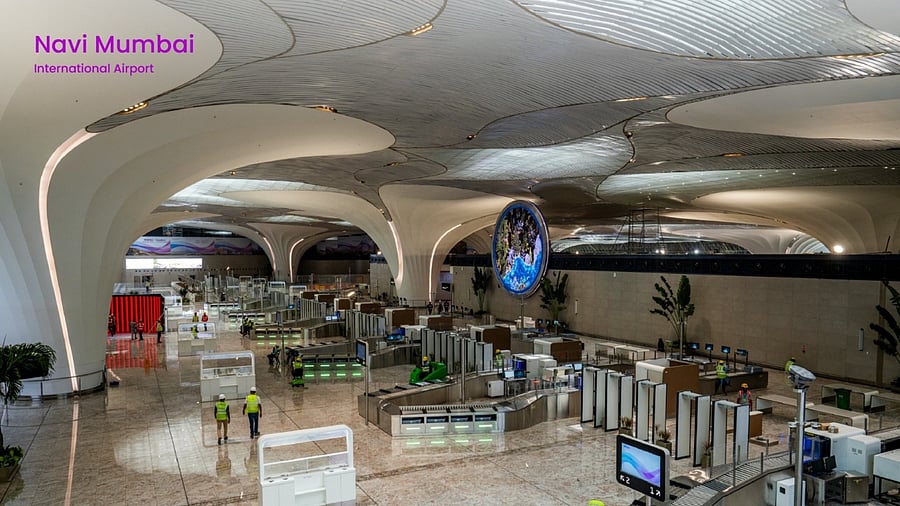
The Navi Mumbai International Airport (NMIA).
Credit: X/@navimumairport
Raigad: Designed as a multimodal hub, the Navi Mumbai International Airport (NMIA) will be seamlessly connected to the Mumbai Trans Harbour Link, Navi Mumbai Metro and Mumbai Metro, suburban rail networks of Indian Railway, and planned waterways.
This integration of NMIA located in Ulwe in Raigad district will reduce travel times, enhance regional connectivity, and strengthen cargo and passenger movement across the vast hinterland of western India.
Billed as a transformative mega-infrastructure project, NMIA has been developed as a Greenfield airport by the City and Industrial Development Corporation of Maharashtra Ltd (CIDCO) and Adani Airports Holdings Ltd (AAHL), which is part of the Adani Group.
The NMIA is being developed under the Public Private Partnership (PPP) framework on a Design, Build, Finance, Operate and Transfer (DBFOT).
The new airport will transform the Mumbai metropolitan region (MMR), which comprises the twin districts of Mumbai City and Mumbai Suburban and large stretches of adjoining districts of Palghar-Thane-Raigad.
“NMIA is a landmark in India’s aviation journey, uniting cutting-edge technology, sustainability, and a passenger-first experience. By complementing CSMIA, it reinforces Mumbai’s role as a global aviation hub and sets a blueprint for future-ready airports nationwide,” said Jeet Adani, Director, AAHL.
Envisioned as part of a dual-airport system for the MMR, NMIA will complement CSMIA. With an initial capacity of 20 million passengers per annum (MPPA) and 0.5 million metric tonnes of cargo annually, the airport will eventually expand to manage 90 MPPA, making it one of the largest passenger-handling airports in India.
In its first two phases, NMIA will operate with a single runway and terminal capable of handling 20 MPPA. Over time, the airport will expand to include four runways and multiple terminals, featuring a dedicated cargo terminal and state-of-the-art facilities for perishables and express cargo, thereby enhancing India’s trade and logistics ecosystem.
Rising over Ulwe near Panvel, the airport spans 1,160 hectares and is designed to accommodate up to 90 million passengers annually in its full build-out, working in synergy in a twin airport System and easing pressure on CSMIA while extending connectivity to Thane, Pune, Raigad, and the Konkan belt.
With the Atal Setu offering a 20-minute link from South Mumbai, strengthened by the Sion–Panvel Highway, NMIA will be at the heart of an integrated transport network. Its creation has involved vast engineering efforts, from tunnelling hills to relocating villages.
Already fuelling real estate, logistics, and business expansion across Navi Mumbai, NMIA signals a shift in Mumbai’s economic gravity while offering Maharashtra a chance to showcase world-class infrastructure and balanced urban growth.